I tested 2 scenarios in my environment :
Scenario 1: Generating a new certificate in Keyvault and uploading it in application gateway ssl certificate.
provider "azurerm" {
features{}
}
data "azurerm_client_config" "current" {}
data "azurerm_resource_group" "example"{
name = "ansumantest"
}
resource "azurerm_user_assigned_identity" "base" {
resource_group_name = data.azurerm_resource_group.example.name
location = data.azurerm_resource_group.example.location
name = "mi-appgw-keyvault"
}
resource "azurerm_key_vault" "kv" {
name = "ansumankeyvault01"
location = data.azurerm_resource_group.example.location
resource_group_name = data.azurerm_resource_group.example.name
tenant_id = data.azurerm_client_config.current.tenant_id
sku_name = "standard"
access_policy {
object_id = data.azurerm_client_config.current.object_id
tenant_id = data.azurerm_client_config.current.tenant_id
certificate_permissions = [
"Create",
"Delete",
"DeleteIssuers",
"Get",
"GetIssuers",
"Import",
"List",
"ListIssuers",
"ManageContacts",
"ManageIssuers",
"Purge",
"SetIssuers",
"Update"
]
key_permissions = [
"Backup",
"Create",
"Decrypt",
"Delete",
"Encrypt",
"Get",
"Import",
"List",
"Purge",
"Recover",
"Restore",
"Sign",
"UnwrapKey",
"Update",
"Verify",
"WrapKey"
]
secret_permissions = [
"Backup",
"Delete",
"Get",
"List",
"Purge",
"Restore",
"Restore",
"Set"
]
}
access_policy {
object_id = azurerm_user_assigned_identity.base.principal_id
tenant_id = data.azurerm_client_config.current.tenant_id
secret_permissions = [
"Get"
]
}
}
output "secret_identifier" {
value = azurerm_key_vault_certificate.example.secret_id
}
resource "azurerm_key_vault_certificate" "example" {
name = "generated-cert"
key_vault_id = azurerm_key_vault.kv.id
certificate_policy {
issuer_parameters {
name = "Self"
}
key_properties {
exportable = true
key_size = 2048
key_type = "RSA"
reuse_key = true
}
lifetime_action {
action {
action_type = "AutoRenew"
}
trigger {
days_before_expiry = 30
}
}
secret_properties {
content_type = "application/x-pkcs12"
}
x509_certificate_properties {
# Server Authentication = 1.3.6.1.5.5.7.3.1
# Client Authentication = 1.3.6.1.5.5.7.3.2
extended_key_usage = ["1.3.6.1.5.5.7.3.1"]
key_usage = [
"cRLSign",
"dataEncipherment",
"digitalSignature",
"keyAgreement",
"keyCertSign",
"keyEncipherment",
]
subject_alternative_names {
dns_names = ["internal.contoso.com", "domain.hello.world"]
}
subject = "CN=hello-world"
validity_in_months = 12
}
}
}
resource "azurerm_virtual_network" "example" {
name = "example-network"
resource_group_name = data.azurerm_resource_group.example.name
location = data.azurerm_resource_group.example.location
address_space = ["10.254.0.0/16"]
}
resource "azurerm_subnet" "frontend" {
name = "frontend"
resource_group_name = data.azurerm_resource_group.example.name
virtual_network_name = azurerm_virtual_network.example.name
address_prefixes = ["10.254.0.0/24"]
}
resource "azurerm_subnet" "backend" {
name = "backend"
resource_group_name = data.azurerm_resource_group.example.name
virtual_network_name = azurerm_virtual_network.example.name
address_prefixes = ["10.254.2.0/24"]
}
resource "azurerm_public_ip" "example" {
name = "example-pip"
resource_group_name = data.azurerm_resource_group.example.name
location = data.azurerm_resource_group.example.location
allocation_method = "Static"
sku = "standard"
}
# since these variables are re-used - a locals block makes this more maintainable
locals {
backend_address_pool_name = "${azurerm_virtual_network.example.name}-beap"
frontend_port_name = "${azurerm_virtual_network.example.name}-feport"
frontend_ip_configuration_name = "${azurerm_virtual_network.example.name}-feip"
http_setting_name = "${azurerm_virtual_network.example.name}-be-htst"
listener_name = "${azurerm_virtual_network.example.name}-httplstn"
request_routing_rule_name = "${azurerm_virtual_network.example.name}-rqrt"
redirect_configuration_name = "${azurerm_virtual_network.example.name}-rdrcfg"
}
resource "null_resource" "previous" {}
resource "time_sleep" "wait_240_seconds" {
depends_on = [azurerm_key_vault.kv]
create_duration = "240s"
}
resource "azurerm_application_gateway" "network" {
name = "example-appgateway"
resource_group_name = data.azurerm_resource_group.example.name
location = data.azurerm_resource_group.example.location
sku {
name = "Standard_v2"
tier = "Standard_v2"
capacity = 2
}
gateway_ip_configuration {
name = "my-gateway-ip-configuration"
subnet_id = azurerm_subnet.frontend.id
}
frontend_port {
name = local.frontend_port_name
port = 443
}
frontend_ip_configuration {
name = local.frontend_ip_configuration_name
public_ip_address_id = azurerm_public_ip.example.id
}
backend_address_pool {
name = local.backend_address_pool_name
}
backend_http_settings {
name = local.http_setting_name
cookie_based_affinity = "Disabled"
path = "/path1/"
port = 443
protocol = "Https"
request_timeout = 60
}
http_listener {
name = local.listener_name
frontend_ip_configuration_name = local.frontend_ip_configuration_name
frontend_port_name = local.frontend_port_name
protocol = "Https"
ssl_certificate_name = "app_listener"
}
identity {
type = "UserAssigned"
identity_ids = [azurerm_user_assigned_identity.base.id]
}
ssl_certificate {
name = "app_listener"
key_vault_secret_id = azurerm_key_vault_certificate.example.secret_id
}
request_routing_rule {
name = local.request_routing_rule_name
rule_type = "Basic"
http_listener_name = local.listener_name
backend_address_pool_name = local.backend_address_pool_name
backend_http_settings_name = local.http_setting_name
}
depends_on = [time_sleep.wait_240_seconds]
}
Output:

Scenario 2 : Using one certificate which I import from local machine to keyvault and using it in application gateway.
provider "azurerm" {
features{}
}
data "azurerm_client_config" "current" {}
data "azurerm_resource_group" "example"{
name = "ansumantest"
}
resource "azurerm_user_assigned_identity" "base" {
resource_group_name = data.azurerm_resource_group.example.name
location = data.azurerm_resource_group.example.location
name = "mi-appgw-keyvault"
}
resource "azurerm_key_vault" "kv" {
name = "ansumankeyvault01"
location = data.azurerm_resource_group.example.location
resource_group_name = data.azurerm_resource_group.example.name
tenant_id = data.azurerm_client_config.current.tenant_id
sku_name = "standard"
access_policy {
object_id = data.azurerm_client_config.current.object_id
tenant_id = data.azurerm_client_config.current.tenant_id
certificate_permissions = [
"Create",
"Delete",
"DeleteIssuers",
"Get",
"GetIssuers",
"Import",
"List",
"ListIssuers",
"ManageContacts",
"ManageIssuers",
"Purge",
"SetIssuers",
"Update"
]
key_permissions = [
"Backup",
"Create",
"Decrypt",
"Delete",
"Encrypt",
"Get",
"Import",
"List",
"Purge",
"Recover",
"Restore",
"Sign",
"UnwrapKey",
"Update",
"Verify",
"WrapKey"
]
secret_permissions = [
"Backup",
"Delete",
"Get",
"List",
"Purge",
"Restore",
"Restore",
"Set"
]
}
access_policy {
object_id = azurerm_user_assigned_identity.base.principal_id
tenant_id = data.azurerm_client_config.current.tenant_id
secret_permissions = [
"Get"
]
}
}
output "secret_identifier" {
value = azurerm_key_vault_certificate.example.secret_id
}
resource "azurerm_key_vault_certificate" "example" {
name = "imported-cert"
key_vault_id = azurerm_key_vault.kv.id
certificate {
contents = filebase64("C:/appgwlistner.pfx")
password = "password"
}
certificate_policy {
issuer_parameters {
name = "Self"
}
key_properties {
exportable = true
key_size = 2048
key_type = "RSA"
reuse_key = false
}
secret_properties {
content_type = "application/x-pkcs12"
}
}
}
resource "azurerm_virtual_network" "example" {
name = "example-network"
resource_group_name = data.azurerm_resource_group.example.name
location = data.azurerm_resource_group.example.location
address_space = ["10.254.0.0/16"]
}
resource "azurerm_subnet" "frontend" {
name = "frontend"
resource_group_name = data.azurerm_resource_group.example.name
virtual_network_name = azurerm_virtual_network.example.name
address_prefixes = ["10.254.0.0/24"]
}
resource "azurerm_subnet" "backend" {
name = "backend"
resource_group_name = data.azurerm_resource_group.example.name
virtual_network_name = azurerm_virtual_network.example.name
address_prefixes = ["10.254.2.0/24"]
}
resource "azurerm_public_ip" "example" {
name = "example-pip"
resource_group_name = data.azurerm_resource_group.example.name
location = data.azurerm_resource_group.example.location
allocation_method = "Static"
sku = "standard"
}
# since these variables are re-used - a locals block makes this more maintainable
locals {
backend_address_pool_name = "${azurerm_virtual_network.example.name}-beap"
frontend_port_name = "${azurerm_virtual_network.example.name}-feport"
frontend_ip_configuration_name = "${azurerm_virtual_network.example.name}-feip"
http_setting_name = "${azurerm_virtual_network.example.name}-be-htst"
listener_name = "${azurerm_virtual_network.example.name}-httplstn"
request_routing_rule_name = "${azurerm_virtual_network.example.name}-rqrt"
redirect_configuration_name = "${azurerm_virtual_network.example.name}-rdrcfg"
}
resource "null_resource" "previous" {}
resource "time_sleep" "wait_240_seconds" {
depends_on = [azurerm_key_vault.kv]
create_duration = "240s"
}
resource "azurerm_application_gateway" "network" {
name = "example-appgateway"
resource_group_name = data.azurerm_resource_group.example.name
location = data.azurerm_resource_group.example.location
sku {
name = "Standard_v2"
tier = "Standard_v2"
capacity = 2
}
gateway_ip_configuration {
name = "my-gateway-ip-configuration"
subnet_id = azurerm_subnet.frontend.id
}
frontend_port {
name = local.frontend_port_name
port = 443
}
frontend_ip_configuration {
name = local.frontend_ip_configuration_name
public_ip_address_id = azurerm_public_ip.example.id
}
backend_address_pool {
name = local.backend_address_pool_name
}
backend_http_settings {
name = local.http_setting_name
cookie_based_affinity = "Disabled"
path = "/path1/"
port = 443
protocol = "Https"
request_timeout = 60
}
http_listener {
name = local.listener_name
frontend_ip_configuration_name = local.frontend_ip_configuration_name
frontend_port_name = local.frontend_port_name
protocol = "Https"
ssl_certificate_name = "app_listener"
}
identity {
type = "UserAssigned"
identity_ids = [azurerm_user_assigned_identity.base.id]
}
ssl_certificate {
name = "app_listener"
key_vault_secret_id = azurerm_key_vault_certificate.example.secret_id
}
request_routing_rule {
name = local.request_routing_rule_name
rule_type = "Basic"
http_listener_name = local.listener_name
backend_address_pool_name = local.backend_address_pool_name
backend_http_settings_name = local.http_setting_name
}
depends_on = [time_sleep.wait_240_seconds]
}
Outputs:

Note:
Please make sure to have the pfx certificate with private keys. While you are exporting a pfx certificate using a security certificate, please make sure to have the following propeties selected as shown below and then give a password and export it.





